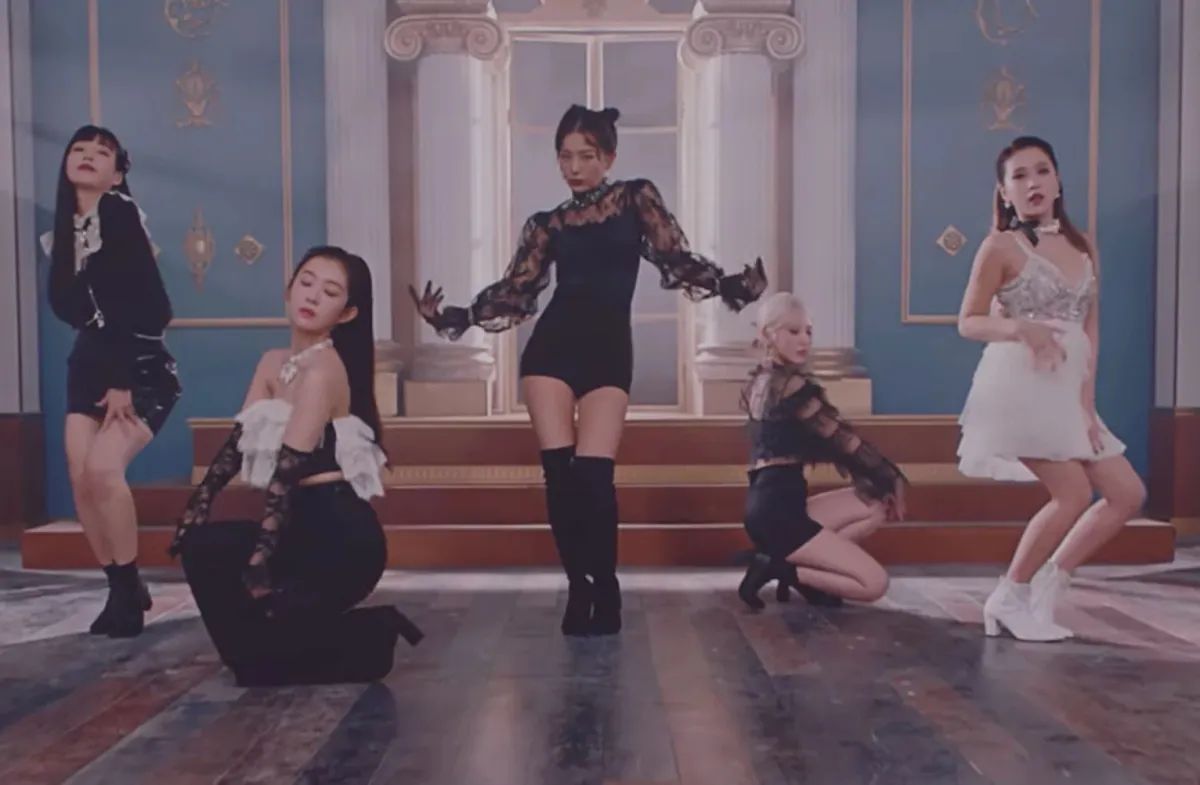K-Pop groups of every generation can thrive or fall on their concepts. In such a visual-led music genre—the aesthetic of a certain album, its tracks, and all its related performances (the concept in a nutshell) is everything. Some groups debut with one concept and then switch to another when they have a new story to tell—going through what K-pop fans call eras. Others debut and build their careers with a different iteration of the same concept over and over—only changing to another when they realize they have outgrown it. Others still have no fixed concept and pick and choose what to experiment with each comeback. And then there’s Red Velvet.

There’s a reason why the five members of Red Velvet, one of the diamonds in SM Entertainment’s crown, are known as “Concept Queens” throughout the K-pop fandom. This is partly because Irene, Seulgi, Wendy, Joy, and Yeri are just that good and can pull everything off. But it’s also because Red Velvet was always meant to have a double concept, and it’s right there in the name.
But before we delve into the double concept to end all doubt concepts, some background. So, sitting at two opposite ends of a spectrum in K-Pop are the Cute Concept and Boy/Girl Crush Concept. Think TWICE’s “LIKEY”—even though the group has by now switched to a more mature concept as opposed to BLACKPINK’s “DDU-DU DDU-DU.”
Groups generally fall on one side of the spectrum, and while they might have a big concept switch in the middle—like CLC did when they passed from a cute concept with, “No Oh Oh” to girl crush smash hit extraordinaire, “Hobgoblin” in 2017—they tend to stick to the side they choose.
A lot of concept decisions have to do with the target audience they have in mind. While Cute Concepts are—generally speaking—more appreciated by K-Pop’s home crowd in South Korea, Boy and Girl Crush Concepts tend to resonate more with international fans and might help groups get a foothold in Western music charts. But this is a whole other argument that we don’t have time to unpack right now.

Suffice it to say, that groups pick one side of the Cute/Badass spectrum and stick with it because switching between concepts that are so diametrically opposed is not as easy as it looks. It’s not just a matter of changing clothes and swapping out plaid school uniforms for combat boots and leather jackets. It’s a complete reconstruction of idols’ attitudes and public images—in an industry that thrives on parasocial relationships and the familiarity that’s built between the members of a group and their fans.
The concept switch does pay off considerably when done right, but it also has a very high chance of going south when it happens to simply follow the latest trends. The same goes for having a double concept that alternates between Cute and Boy/Girl Crush— it requires careful planning to be convincing and cohesive. This is why Red Velvet’s double concept is as successful and as iconic as it is. It is not something that they decided while the group was already active and promoting, as a reaction to the varying influences in the industry, Red Velvet was founded on its double concept.
“Red Velvet” might seem like a random name—maybe they really love cake over at SM Entertainment?—but it actually encapsulates both sides of the group’s concepts and music. “Red” comebacks and eras are brighter, poppier, lighter, and definitely classifiable under a Cute Concept. On the other hand, “Velvet” title tracks are darker, full of witchy vibes, and definitely more mature. Not quite a Girl Crush Concept in the most classical definition of the term, it lacks the hard-hitting music and “in your face” attitudes that have become synonymous with 100% Crush Concepts, but “Velvet” comebacks definitely err more closely to that end of the spectrum than “Red” comebacks.

This is the part where music videos enter the scene to better explain what I mean by “Red” and “Velvet” songs. The former include comebacks like “Red Flavor,” “Power Up,” “Zimzalabim,” and “Dumb Dumb.” Bright colors, upbeat tempo, and almost nonsensical imagery are a staple of these comebacks—which are often summer comebacks, to the surprise of absolutely no one.
“Velvet” songs, on the other hand, include tracks like “Bad Boy,” “Peak-a-Boo,” and “Psycho.” They’re smoother and more mature and Red Velvet always looks 100% like a witch coven ready to put an unbreakable curse on you. Plus, the general cinematography of the music videos themselves, almost makes the five members seem like a completely different group.
While on the surface, the two concepts look completely distinct, they share much more than they let on. This is the key that many acts trying to have a double concept themselves are missing. “Red” songs are cheery and bright, but they always have an undertone of unease, like you’re one minute away from turning your back on Yeri discussing grapes in “Red Flavor” to discover a murder scene. And that sense of “something’s not right here” is brought center stage in the “Velvet” comebacks, making the two concepts the two sides of the same coin they were always meant to be.
(featured image: SM Entertainment)









Published: Apr 1, 2022 12:45 pm